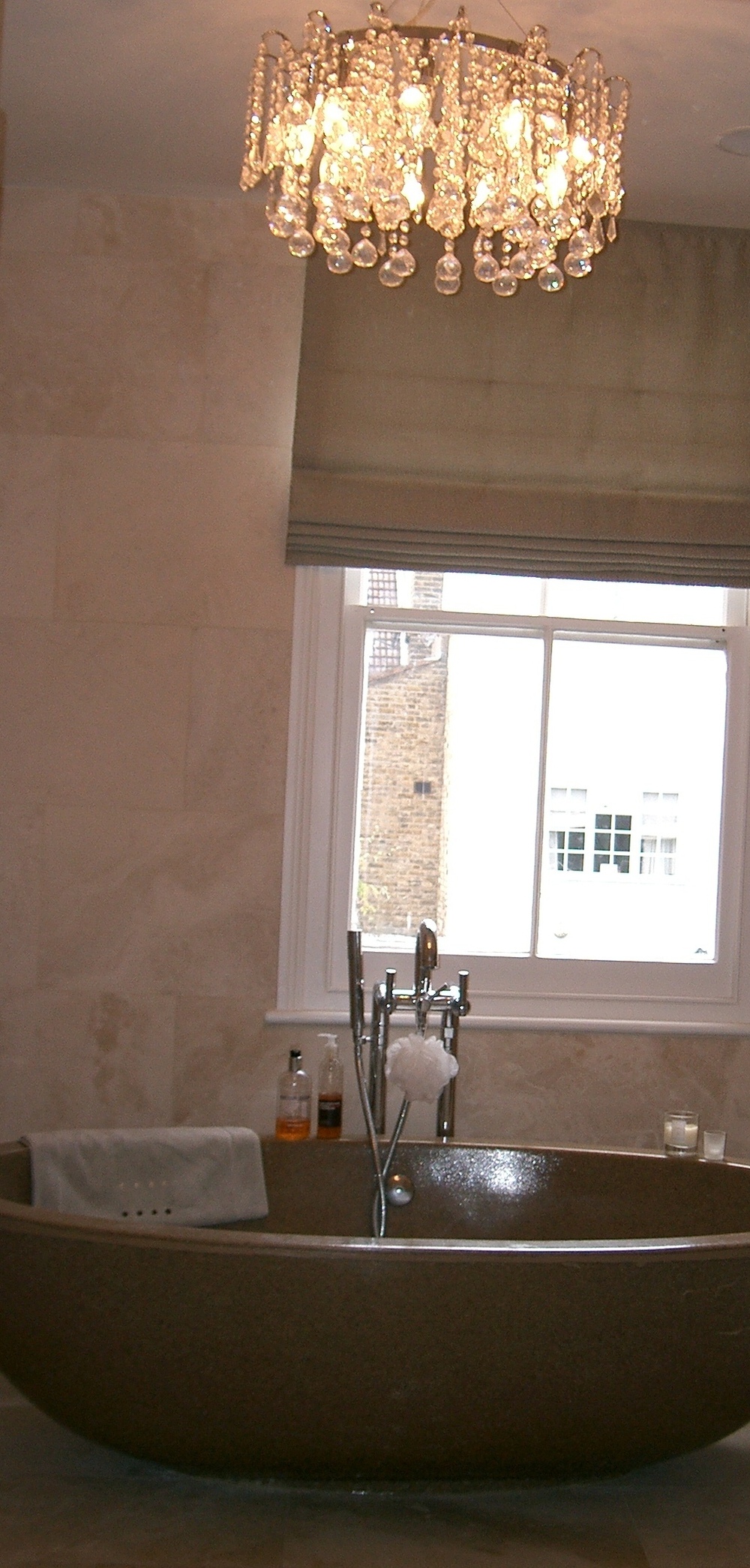Recently a client’s Interior Designer asked me if a decorative pendant hanging over their current dining table could be installed in the master bathroom of their new home which is currently being built. It’s a beautiful high-end fitting that the client was reluctant to leave behind, and we had been struggling to find somewhere sensible for it in the new house.
The Interior Designer knew that there are regulations regarding the installation of lighting in bathrooms, but she wasn’t familiar with the exact detail. The rules are listed in the 17th Edition of the IEE Wiring Regulations. These regulations divide wet areas, such as bathrooms, into Zones based on the proximity to baths or showers cubicles. They determine the level of water tightness that’s required of the lighting located in the various areas. The water tightness is known as Ingress Protection and is more commonly known as an IP rating. The closer to a bath or shower a fitting is, the higher the protection (IP rating) that’s required.
In my client’s case the answer was “Yes we can”. The light can be installed high enough over the bath that it is considered to be “Outside the Zones” so a specially sealed bathroom fitting is not necessary. However, the lighting circuit will need to be protected by a 30mA RCD circuit breaker in the consumer unit to ensure that if the fitting became a potential shock hazard the power to it will be instantly cut. Even if it hadn’t been suitable, it wouldn’t have been a disaster as these days there is a great selection of bathroom rated chandeliers to choose from.
I further checked with the electrical contractor who will be responsible for installing the fitting that he was happy to do so. This is a courtesy, because although a specially sealed fitting isn’t needed in this location, it is the contractor’s overall responsibility for the safety of their work. I’m looking forward to seeing it become part of an incredibly glamorous bathroom.

